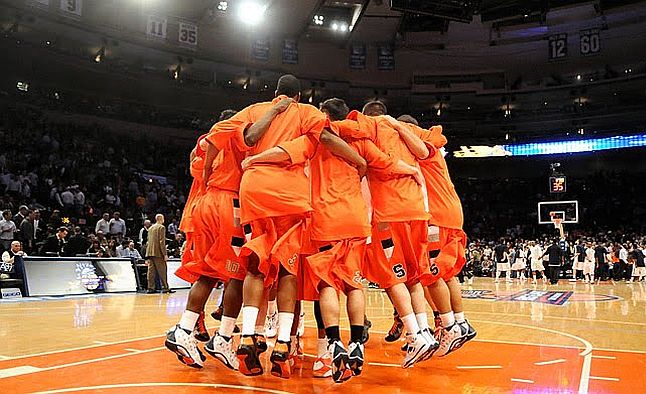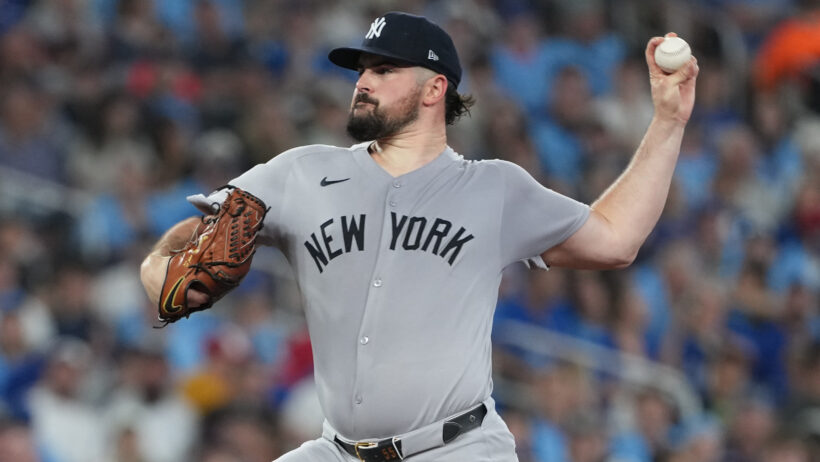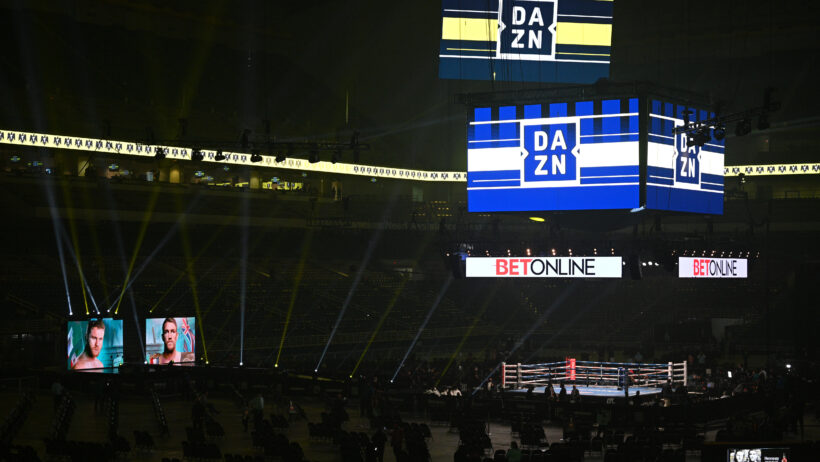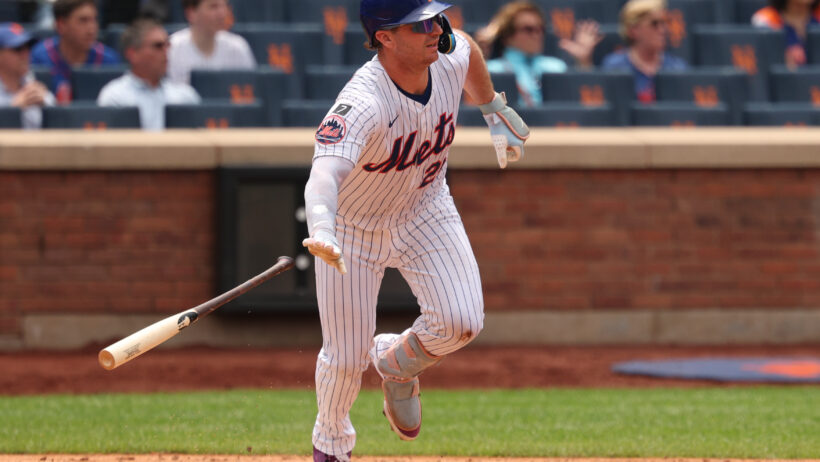Which 2018 Cinderella Will Dance to the Final Four?
By Sascha Paruk in College Basketball
Updated: March 21, 2018 at 3:44 pm EDTPublished:

- Four Cinderellas remain in the 2018 March Madness bracket.
- How did Nevada, FSU, Loyola, and Syracuse survive?
- Which of those underdogs has the best chance to reach the Final Four?
Four true Cinderellas remain in the 2018 NCAA Tournament: #7 Nevada, #9 Florida State, #11 Loyola-Chicago, and #11 Syracuse. (Some might argue about Nevada, but pulling a 21-point second-half comeback on a #2 seed gives you Cinderella status in our books.)
How did they get here, and what are the chances they continue dancing all the way to the Final Four?
#7 Nevada Wolfpack (South Region)
| RESUME | SCORE/ODDS |
|---|---|
| Round of 64: #10 Texas | 87-83 (OT) |
| Round of 32: #2 Cincinnati | 75-73 |
| Final Four Odds | 9/2 (18.2% chance) |
Why they’ll lose: Eric Musselman’s team is playing with fire. Let me rephrase that, Eric Musselman’s team is lighting up a smoke in the middle of a gasoline fight, Zoolander-style. They have come out of the gates slowly in each of their first two games, spotting both Texas and Cincinnati double-digit leads. Their 21-point second-half comeback against the Bearcats’ second-ranked defense was nothing short of mythical. After 85 minutes of basketball, the Wolfpack have held the lead for less than two minutes.
The late-game heroics they’ve been getting from the Martin twins (Caleb and Cody) are completely unsustainable.

Why they’ll win: Musselman and company have to feel like the team of destiny at this point. They also have the easiest path of the potential Cinderellas, facing #11 Loyola-Chicago in the Sweet 16 and then either #5 Kentucky or #9 Kansas State in the Elite Eight.
Loyola held Miami and Tennessee to 62 points each, but Nevada and its sixth-ranked offense present much different challenges. Their almost uniformly 6’7 lineup creates mismatches all over the court, and Musselman does an excellent job of exploiting them. Defensively, they should be able to give the Rambler shooters issues with their length, and Loyola doesn’t have the bigs to dominate the glass and the post the way Texas and Cincinnati did. Loyola is 327th in the nation in rebounding.
Kentucky looms in the Elite Eight, and with the game in “Cat”lanta, the Wolfpack would face a highly partisan crowd. That will be a crucible, but not on the level of a Villanova or a Duke.
#11 Loyola-Chicago Ramblers (South Region)
| RESUME | SCORE/ODDS |
|---|---|
| Round of 64: #6 Miami | 64-62 |
| Round of 32: #3 Tennessee | 63-62 |
| Final Four Odds | 11/2 (15.4% chance) |
Why they’ll lose: History indicates that you need an elite offense to win the title, and generally a half-decent one to reach the Final Four. The Ramblers’ offense is the fourth-worst remaining in the tournament in terms of efficiency, ranking ahead of only Kansas State, Syracuse, and a Texas A&M team that played shorthanded much of the season.
Their defense is undoubtedly solid (27th in efficiency), but it’s not the smothering unit some are making it out to be, and in order to reach the Final Four, they will have to hold down Nevada’s explosive attack (sixth in efficiency) and then, likely, a Kentucky team that is filled with future pros and just finding its stride. Keeping Tennessee’s Jordan Bone out of the lane is not the same as holding a peak Shai Gilgeous-Alexander in check.
Why they’ll win: The power of Sister Jean!

Also, the power of clutch shooting. Loyola’s solid defense, coupled with its tortoise-like tempo (319th), means it’s likely to play a close, grind-it-out game against Nevada, a team that is only 105th in tempo, itself. It’s hard to say that any team has been more clutch than Nevada in this tournament, but the Ramblers actually connect at the same clip from three (39.8%) and have already hit two de facto buzzer beaters to win their first two games.

Lastly, they have the same relatively easy path as Nevada. It’s not easy easy, but it’s the best of the bunch.
#9 Florida State Seminoles (West Region)
| RESUME | SCORE/ODDS |
|---|---|
| Round of 64: #8 Missouri | 67-54 |
| Round of 32: #1 Xavier | 75-70 |
| Final Four Odds | 7/1 (12.5% chance) |
Why they’ll lose: This just isn’t a great basketball team, and they really don’t do anything at an elite level. They’re 30th overall on KenPom, 31st on offense, and 55th on defense. In the Round of 64, they had the good fortune of playing a Missouri team that was trying to “integrate” Michael Porter Jr. into its lineup. (Read: Porter jacked up 12 shots in just 28 minutes and looked pretty terrible doing so, shooting 33% from the field.) The Tigers couldn’t get anything going offensively and the game was over at halftime (42-20 at the break).
The Noles were only able to mount their improbable comeback against Xavier because Trevon Bluiett basically no-showed for the Musketeers (8 points, 1 assist, 5 turnovers) and JP Macura was tagged with two terrible foul calls late in the game.
Leonard Hamilton has no go-to scorer. Instead, he has seven players averaging between 7.3 and 12.9 PPG. Who’s Hamilton going to look to in crunch time?

Why they’ll win: While they don’t have it as good as Nevada and Loyola, FSU meets Gonzaga in the Sweet 16 and would then get the winner of #3 Michigan/#7 Texas A&M. That’s not nearly as arduous a path as what Syracuse is facing. And their lack of a go-to guy could be interpreted as tremendous depth: you can’t shut down FSU by game-planning for Phil Cofer, Terrence Mann, or Brian Angola. The Noles have a litany of potential bucket-getters, and Gonzaga has played some highly questionable team defense this year.
The Noles have a litany of potential bucket-getters, and Gonzaga has played some highly questionable team defense this year.
They also have tons of experience: Cofer and Angola are seniors; Mann is a junior; and no freshman logs over 20 minutes. This group already showed that it won’t get rattled if and when it finds itself in a hole. The Zags, on the other hand, are prone to lapses. They let a 15-0 lead out of the gate turn into a seven-point second-half deficit against Ohio State. Earlier in the year, they let a nine-point second-half lead evaporate at home during a 74-71 loss to St. Mary’s.
#11 Syracuse Orange (Midwest Region)
| RESUME | SCORE/ODDS |
|---|---|
| First Four: #11 Arizona State | 60-56 |
| Round of 64: #6 TCU | 57-52 |
| Round of 32: #3 Michigan State | 55-53 |
| Final Four Odds | 13/1 |
Why they’ll lose: Cuse is the worst team remaining, per KenPom, ranked 44th overall in efficiency. (Kansas State is next at 39th.) They are by far the worst on offense, sitting 139th. No other team is worse than 75th. It’s not like their offense has suddenly heated up at the right time, either; they haven’t scored more than 60 points through three games. They shot 12.5% from three against Michigan State!
How are they still here? Their 2-3 zone and their slow tempo (345th) are keeping opponents off balance and preventing anyone from getting in a rhythm. But that’s not going to last forever. MSU got a lot of clean looks and simply couldn’t knock them down.

With #2 Duke (37.8 3P%) up next, and #1 Kansas (40.3 3P%) likely to follow, the percentages are eventually going to get this team, and they have the hardest route to the Final Four.
There’s also the issue of fatigue. Jim Boeheim only plays a seven-man rotation and generally needs Tyus Battle to play the entire game. The fact that they were in the First Four means they’ve had to play 40 extra minutes than everyone else.
Why they’ll win: Because that’s what this team does in March, especially when they don’t even deserve to be in the field.
More realistically, the way they play means that games are not likely to get out of hand. You can only score so many points when you have so few possessions. Any team can hit a cold-spell, and Syracuse’s zone always seems to function like an air conditioner, especially under the bright lights of March Madness, when there’s a little extra pressure.
Plus, the 2-3 zone limits the fatigue issue, as the starters barely have to expend any effort on defense.
They are a massive longshot — the biggest of the 16 teams remaining — but the one thing they do really well has a track record of getting them farther in the tournament than they have any right going. (See 2016.)

Managing Editor
Sascha has been working in the sports-betting industry since 2014, and quickly paired his strong writing skills with a burgeoning knowledge of probability and statistics. He holds an undergraduate degree in linguistics and a Juris Doctor from the University of British Columbia.



